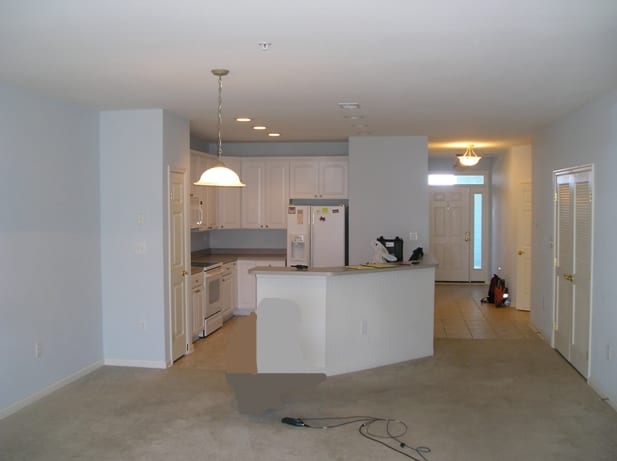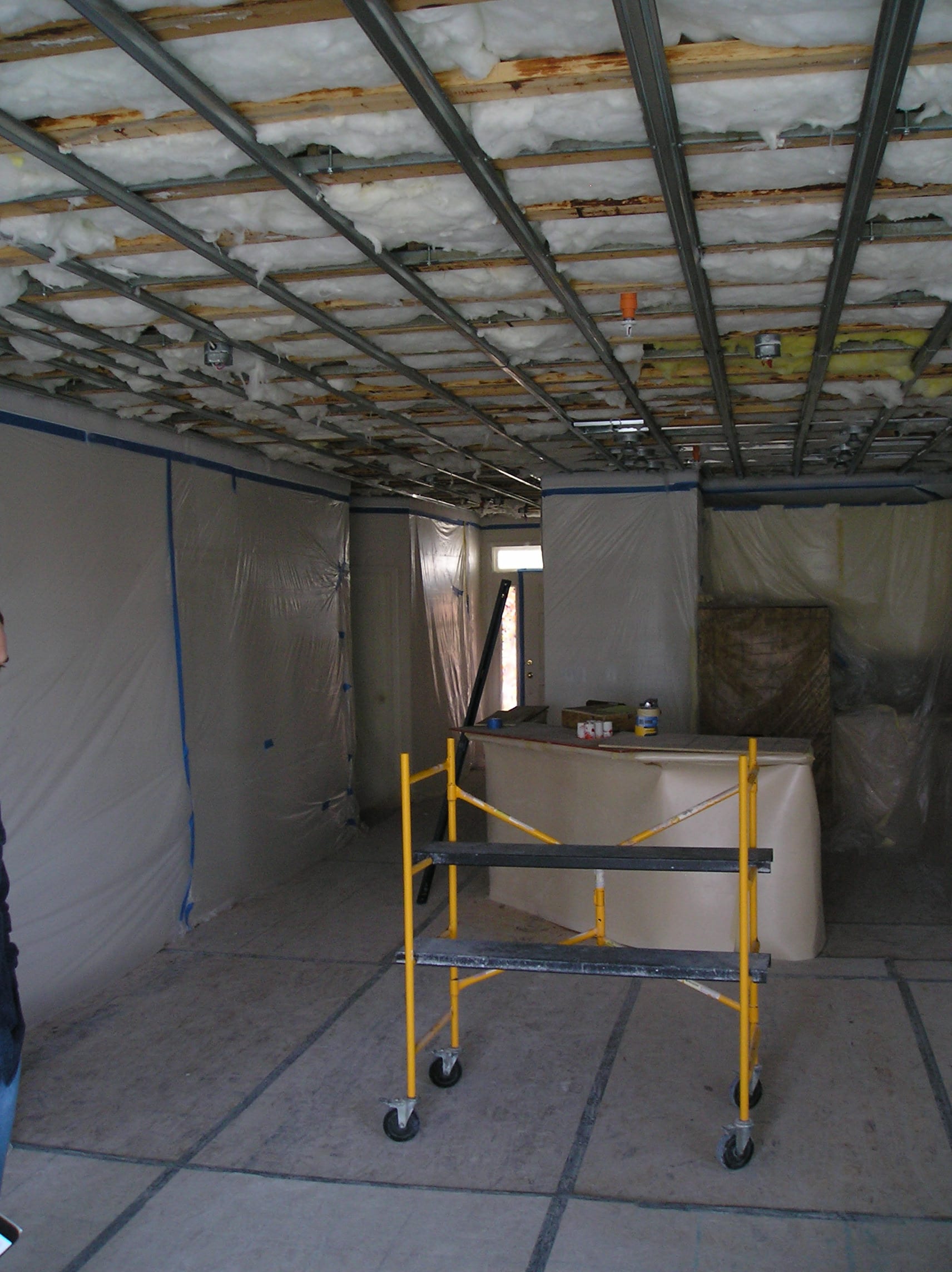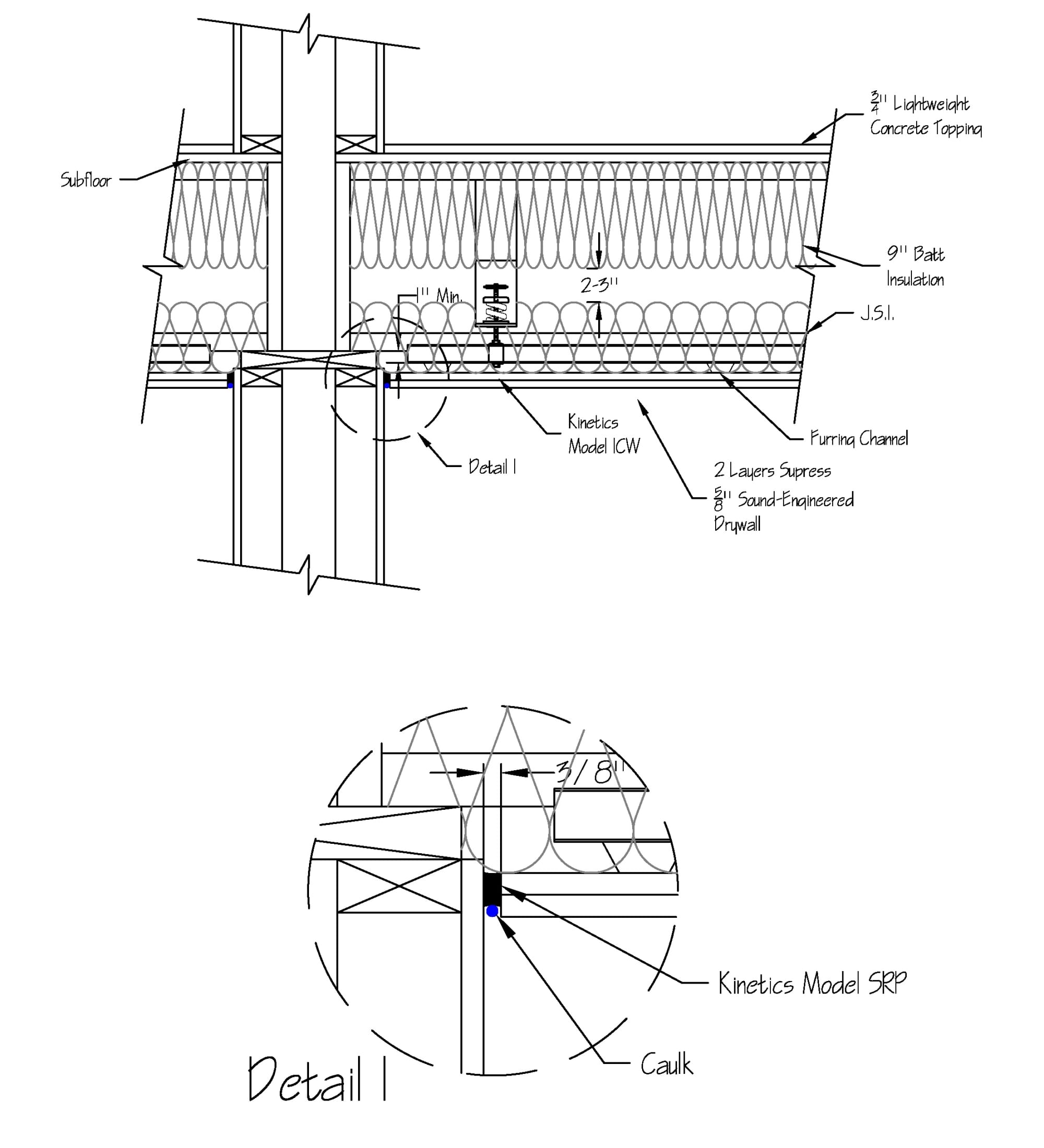The Challenge
Insufficient acoustical construction left condominium builders facing noise complaints from residents almost immediately after this building opened its doors. The floor/ceilings’ original Impact Insulation Class (IIC) rating allowed footsteps and other sounds to traverse easily between units. Replacing the floor system, though, would entail costly damage to tile surfaces.
Our Solution
After a drawing review, site inspections and field testing, Phoenix Noise and Vibration provided the client with a thorough accounting of the condos’ noise issues. The analysis from our Institute of Noise Control Engineers-certified PE showed that, while STC ratings for building components were adequate, IIC ratings were not.
In a new building, architects would include noise mitigation between the floor and subfloor and a resilient channel above ceiling drywall to address the problem. But those solutions proved impractical in a finished residence. Instead, we approached the problem from below – ordering spring-isolated ceilings (see Figure 2) to create a new noise barrier between apartments. Our end-to-end testing, design and construction management services ensured this novel solution was executed properly.
The Results
While unusual for this type of construction, the spring-isolated ceilings performed just as expected. Post-installation testing showed they improved sound insulation by 13 IIC points. Just as important, our mitigation kept the project within the client’s design requirements and budget.



